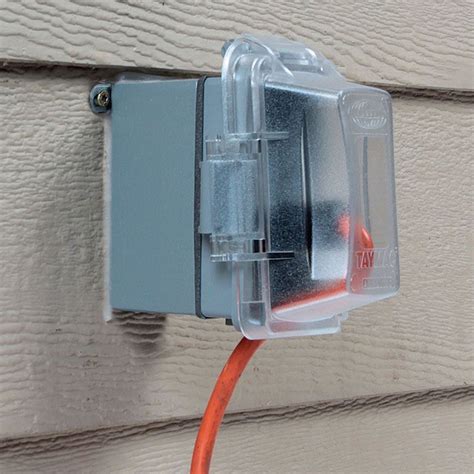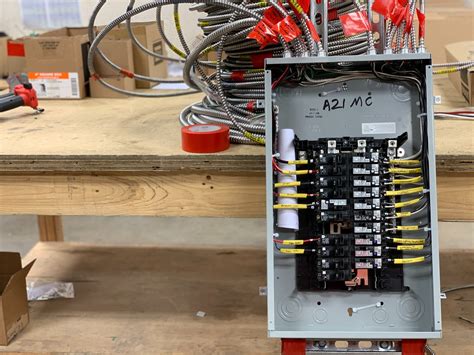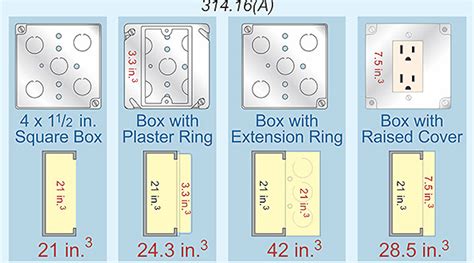electrical box width The National Electrical Code (NEC) provides guidelines for box sizing based on the number and size of wires you're working with. The NEC specifies the minimum volume of the box in cubic inches (cu. in.) that you .
Sheet Metal Fabrication Capabilities. Our online sheet metal fabrication service enables you get a quote in minutes and have your parts delivered in days. We offer 3D visualized Design for Manufacturability (DFM) feedback to help you manage project costs and receive actionable design insights.
0 · types of outdoor electrical boxes
1 · types of electrical panel boxes
2 · standard electrical box sizes
3 · size of electrical outlet box
4 · electrical pull box size chart
5 · electrical box size charts
6 · electrical box size calculator
7 · all types of electrical boxes
We offer different configurations of industrial and commercial stainless steel cabinets with stainless steel cabinet doors, shelves, and extra drawers for increased storage and convenience. A Plus Warehouse is the Honest Commercial Stainless Steel Cabinet Dealer
Electrical boxes come in various sizes and configurations, each designed for specific applications and installation requirements. In this article, we will explore the different standard sizes of electrical boxes and their common .There is a huge selection of electrical boxes, varying by size, shape, mounting device, and composition. One of the first distinctions to note is that of new work boxes and remodel or cut .
Electrical Boxes vary in size, material, number of gangs, and shape and are designed for specific uses like junctions, outlets, and switch or fixture boxes for wiring in wall or ceiling. Use this . Use this junction box sizing calculator to determine the recommended dimensions of a junction box depending on the number of straight and angle pulls entering it and meet the National Electrical Code®.
Choosing the Right Electrical Box for Your Project. Selecting the appropriate electrical box depends on several factors, including construction, wiring method, devices, location, and safety. Type of Construction. Your . The National Electrical Code (NEC) provides guidelines for box sizing based on the number and size of wires you're working with. The NEC specifies the minimum volume of the box in cubic inches (cu. in.) that you .
Height x Width x Length = The total cubic inches or the volume of the box. Some boxes will have its volume listed on the box while others will not. New nonmetallic boxes should have its . Here we describe matching 15-Amp receptacles to 15-Amp circuits, 20-Amp receptacles to 20-Amp circuits, two-wire receptacles where no ground is present, GFCI and AFCI electrical receptacles, and the proper electrical box to .
A typical 4-inch box is the right size, but the actual box dimensions, in particular, box depth and thus the space needed in cubic inches varies depending on how many wires or connectors will be in the box.
Standard rectangular boxes, or single gang boxes, are used for single light fixture switches and outlet receptacles. They are generally about 2 inches wide by 4 inches tall, and their depths range from 1-1/2 inches to 3-1/2 inches. Standard rectangular boxes can . Electrical boxes come in various sizes and configurations, each designed for specific applications and installation requirements. In this article, we will explore the different standard sizes of electrical boxes and their common uses.There is a huge selection of electrical boxes, varying by size, shape, mounting device, and composition. One of the first distinctions to note is that of new work boxes and remodel or cut-in boxes.Electrical Boxes vary in size, material, number of gangs, and shape and are designed for specific uses like junctions, outlets, and switch or fixture boxes for wiring in wall or ceiling. Use this guide to determine the best electrical box choice for your application.
Use this junction box sizing calculator to determine the recommended dimensions of a junction box depending on the number of straight and angle pulls entering it and meet the National Electrical Code®.

metal ammo box ideas
types of outdoor electrical boxes

Choosing the Right Electrical Box for Your Project. Selecting the appropriate electrical box depends on several factors, including construction, wiring method, devices, location, and safety. Type of Construction. Your project’s construction type influences the choice of . The National Electrical Code (NEC) provides guidelines for box sizing based on the number and size of wires you're working with. The NEC specifies the minimum volume of the box in cubic inches (cu. in.) that you need to accommodate your wires.
Height x Width x Length = The total cubic inches or the volume of the box. Some boxes will have its volume listed on the box while others will not. New nonmetallic boxes should have its volume listed on the box, while most metal boxes will not. 18g - 1.50 cubic inches per conductor. 16g - 1.75 cubic inches per conductor. Here we describe matching 15-Amp receptacles to 15-Amp circuits, 20-Amp receptacles to 20-Amp circuits, two-wire receptacles where no ground is present, GFCI and AFCI electrical receptacles, and the proper electrical box to hold and mount these devices.A typical 4-inch box is the right size, but the actual box dimensions, in particular, box depth and thus the space needed in cubic inches varies depending on how many wires or connectors will be in the box.
Standard rectangular boxes, or single gang boxes, are used for single light fixture switches and outlet receptacles. They are generally about 2 inches wide by 4 inches tall, and their depths range from 1-1/2 inches to 3-1/2 inches. Standard rectangular boxes can .
Electrical boxes come in various sizes and configurations, each designed for specific applications and installation requirements. In this article, we will explore the different standard sizes of electrical boxes and their common uses.There is a huge selection of electrical boxes, varying by size, shape, mounting device, and composition. One of the first distinctions to note is that of new work boxes and remodel or cut-in boxes.Electrical Boxes vary in size, material, number of gangs, and shape and are designed for specific uses like junctions, outlets, and switch or fixture boxes for wiring in wall or ceiling. Use this guide to determine the best electrical box choice for your application.
Use this junction box sizing calculator to determine the recommended dimensions of a junction box depending on the number of straight and angle pulls entering it and meet the National Electrical Code®. Choosing the Right Electrical Box for Your Project. Selecting the appropriate electrical box depends on several factors, including construction, wiring method, devices, location, and safety. Type of Construction. Your project’s construction type influences the choice of .
The National Electrical Code (NEC) provides guidelines for box sizing based on the number and size of wires you're working with. The NEC specifies the minimum volume of the box in cubic inches (cu. in.) that you need to accommodate your wires.
Height x Width x Length = The total cubic inches or the volume of the box. Some boxes will have its volume listed on the box while others will not. New nonmetallic boxes should have its volume listed on the box, while most metal boxes will not. 18g - 1.50 cubic inches per conductor. 16g - 1.75 cubic inches per conductor.
types of electrical panel boxes
metal adhesive sheets

An exploration of materials, manufacturing processes, design considerations, and finishing options for sheet metal prototypes and low-volume production parts.
electrical box width|standard electrical box sizes